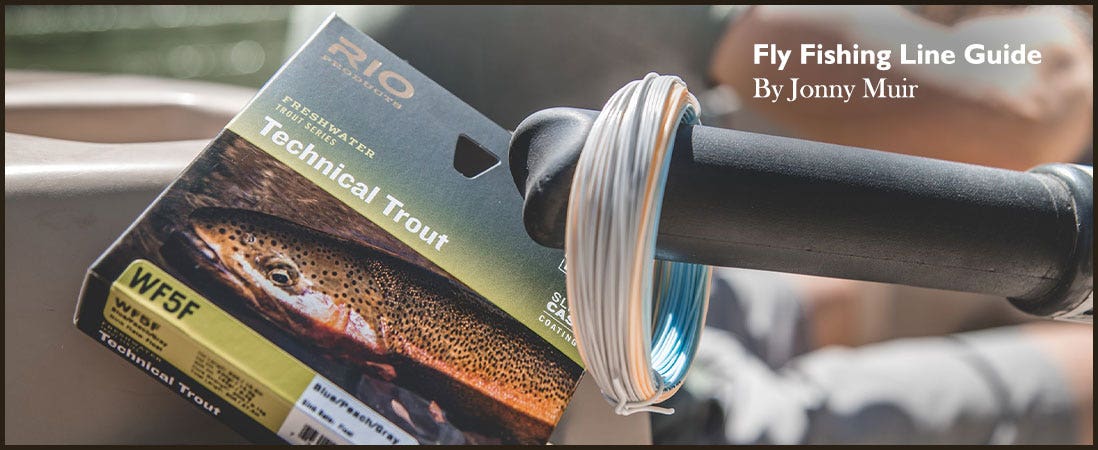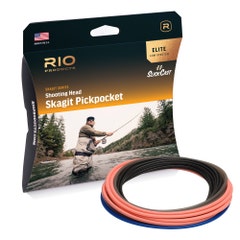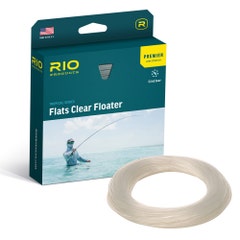Fly Line Guide, Which Fly Line To Use


In the last twenty years the fly line industry has seen massive technological improvements in the quality of fly line cores, coatings, and the ability to create various tapers. These improvements have given anglers more options than ever before in how they fine-tune their fishing approach.
However, all these changes and variables mean that there are now a huge amount of different weights, tapers, profiles and densities on the market, and it can be hard for a beginner or even more experienced angler to know how to choose the most appropriate line for their style of fishing.
Fly Line Weights
The very first consideration to make when buying a fly line is its weight. Every fly rod now has an AFTM (Association of Fishing Tackle Manufacturers) line rating, usually found on its blank near the handle, typically next to a “#”, e.g. #5 or sometimes #5/6. Each of these numbers corresponds to a weight of fly line under guidelines set out by the AFTM rating.
The guideline weight of the fly line refers to the front thirty feet of the line, so any weight beyond the first thirty feet is not taken in to account by the line manufacturer - this is important to remember. More recently, as fly rods have become ‘faster actioned’, fly line manufacturers have really begun pushing the boundaries of the AFTM guidelines. Many AFTM #6 fly lines now weigh, in real terms, #6.5, enabling a caster to flex a fast-actioned rod more easily.
Fly Line Profiles
In reality, many of the choices we have to make regarding fly lines come down to personal preference. Traditionally, there are three different kinds of fly line profile: double taper, weight forward, and shooting head. The development of modern lines has seen the differences between these profiles blur slightly.
Here’s an overview:
Double Taper lines (DT)
Are a long length of thicker level line with a finer taper at each end, hence the name.


Weight Forward lines (WF)
Comprise a long length of thin running line leading up to what is called the ‘head’ at the front end of the fly line.


Shooting Head (SH) lines
Are a more ‘aggressive' version of a weight forward, with even thinner, longer running line and a shorter head.


As we can see from these example images, the fly line is of varying thicknesses throughout its length, and it is through understanding why these variations exist that we can go forward and choose the right fly line for our own application. The transition between these sections of changing thickness is referred to as the ‘taper’.
Essentially there are only three taper areas on a fly line, the rear taper, the belly, and the front taper. This is true even on a DT line, it's just that the belly can be eighty feet long! Understanding what role each of these tapers performs gives us a good grounding for choosing a fly line.
Rear Taper: The rear taper can be considered the "rudder" of a fly line. From reading the rear taper information on the box we can learn about how stable a fly line is in the air and how quickly we can expect it to turn over. When looking at the rear taper, look out for the length and gradient of its taper. If a rear taper is very short with a steep gradient then we can expect this line to try to ‘turn over’ very quickly and aggressively and want to shoot a long way, while being less stable in the air. If the taper is longer and more gradual then this fly line is going to be very stable in the air, turn over more slowly and land more gently, not ideal for distance casters but great for casting small flies at spooky fish.
Belly: The (usually) level length of line between the rear taper and the front taper, the belly can again tell us how a line is likely to behave before we've even cast it. Remembering that the belly is where most of the weight of the line is, we can deduce that a shorter, more compressed belly weight is going to be easier to cast further than a much longer, lighter amount of the same weight. So a short belly is great for casting distance, a longer belly for stability and delicacy.
Front Taper: The front taper is the section of line that is going to turn over your leader, tippet and fly, and as such is a vital component to consider. A shorter front taper is going to be a very very efficient transmitter of power, but because of this it will turn over quickly and land heavily. A longer, more graduated taper will dissipate energy and turn over gently to ensure your leader and fly lands as softly as possible.
Using these three different pieces of information you should be able to look at the information on a fly line box and know exactly what that line is designed for.
Here are a few examples of what you might find:
Medium rear taper - long belly - long front taper: This is a classic presentation fly line for turning over light leaders and small flies delicately. The rear taper provides stability, the long belly is going to turn over slowly and the front taper is going to provide light presentation.
Short front taper - short belly - short head: This is an out and out distance line for turning over heavy leaders and big flies. It's going to fly like a bumble bee and land heavily but shoot a long long way.
Medium rear taper - medium belly - short front taper: This profile style can be found in a large amount of modern weight forward fly lines. The medium rear taper aids stability for all standards of caster, the medium belly doesn't turn over too fast but the short front taper helps everything turn over positively.
Fly Line Density
There are now on the market a huge number of different line densities available to the fly angler, from full floating lines to those that sink at nearly a foot every second! A river angler in the UK will almost never need anything other than a floating line. A small stillwater angler may also like to have an intermediate and a slow sinker. A reservoir competition boat angler may have fifteen lines in their bag from floaters and midge tips right down to Di8 bottom dredgers and everything in between, and they can all get used during a days fishing too!
Salmon fishers generally have two styles of line to choose from: ‘Spey’ lines with long bellies and gentle tapers, and shooting head fly lines designed for double-handed rods. You might see salmon shooting head fly lines referred to as ‘Scandi’ and ‘Skagit’. In simple terms, a Scandi shooting head has a more graduated taper profile than the very heavily front-loaded Skagit style. As with single-handed fly lines, these various styles are all now available in differing densities, often with multi-tip options that include changeable tip sections.
Saltwater Fly Lines
There are now a fantastic range of saltwater lines available, manufactured with saltwater resistant coatings and tapers designed for casting larger, heavier flies into strong winds. The lines one purchases for heavier saltwater species such as tarpon, GTs and sailfish all have far stronger core strengths than your average fly line, enabling the angler to fish with very strong leaders without fear of snapping the fly line whilst playing a fish. There are also various densities available, and these are specific to saltwater fishing situations. Remember because of the saline content of salt water things sink more slowly than they do in fresh water!
It’s also important to note that saltwater fly lines come in ‘cold’ and ‘tropical’ variants - referring to the nature of the coating and how supple it is. In tropical conditions, the warmer water temperature will cause a cold water line to kink up and not lie straight. Bear this in mind when you’re choosing a line for UK bass fishing or bonefishing in the Caribbean.
Understanding Fly Lines Video Series
We hope this overview has given you an understanding of fly lines to help you make the right purchase. If you’re still unsure of what you need, we’re only an email or a phone call away and our team is always happy to help with advice. Better still, come and pay us a visit in-store where you can discuss your requirements in more detail.
Tight lines!
Jonny





















